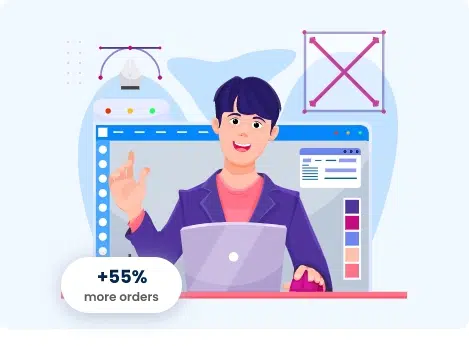Introduction
Any company’s principal retail growth engine is a digital commerce shop. The explosive expansion of online commerce over the previous years has resulted in a slew of eCommerce difficulties. By the end of 2022, eCommerce is estimated to account for 17% of the market. Surfing the powerful e-commerce wave is difficult with the growing size and desire for online businesses.
Nearly 81 percent of buyers start their purchasing trip with an online survey, and 71 percent of customers believe that a quick and instant e-commerce site is critical for a comfortable shopping experience.
While responding to the powerful e-commerce company, managers throughout the world face a slew of eCommerce issues.
While striving to launch an e-commerce store, these are the five most typical eCommerce difficulties.

1. Validation of Online Identity
When a user joins an e-commerce store, the data they provide may not be accurate, which leaves you in confusion if they are genuinely willing to purchase.
Cash-on-delivery orders placed with a fictitious phone number and address, for example, might result in significant financial losses. As a result, doing an online verification process for each user is essential. An unnaturally large number of orders or postcodes that do not correspond to a state or city might cause this. Buyers that join up should always receive an automatic verification link to confirm that they are real.
2. Problems with Cybersecurity
Cyber threats can damage your e-Commerce store with malware, jeopardising its safety and, worse, jeopardising the privacy of your enrolled clients’ information.
Hackers may be able to obtain access to this sensitive information, especially credit card numbers. Ensure that your e-Commerce store is maintained on a separate server that is only devoted to you. Sharing user information with several other websites poses a danger; if one of those sites is hijacked, spyware files might attack the entire server, affecting your shop.
3. Abdication of a Shopping Basket
Supermarket trolley desertion is one of the most severe issues that e-Commerce store faces, regardless of their size. According to statistics, online customers leave their shopping bags 68 percent of the time, with abandonment estimates as high as 80 percent in some businesses. So, what’s the best way to reduce product waste?
Your shopping basket should be redesigned. Please ensure no problems or operations are unnecessarily long and tiresome, such as additional paperwork. Complex checkout operations are among the most prevalent causes of cart abandonment.
Use the live chat to foster your consumers. For example, having a staff member who will reach out and interact with a purchasing client at critical phases of their purchase process might help them avoid leaving.
4. Customer Satisfaction Enhancement
Even with the finest e-Commerce store with a large selection of items and accessible features, brand loyalty is a fickle thing. Any firm lacking client loyalty will struggle, as gaining a new client is five times more expensive than keeping a current one. On the other hand, growing consumer retention rates by 5% can boost profitability by 25% to 95%.
Display your business’s address, phone number, client testimonies and reviews, as well as photos and pertinent information about your employees. This removes the mask from your eCommerce firm and gives it a human face, making it no more invisible.
5. Returns and Reimbursements for Products
Before buying a product, more than 60% of internet buyers check an e-commerce store’s return policy. Consumers would buy more if businesses provided less complicated returns, according to 48% of users, while an unpleasant returns policy deters 80% of customers. In addition, 89 percent of internet customers have returned at least once throughout their customer experience. Consider offering a variety of delivery, billing, and refund options, as well as incentives such as vouchers for customers who are unsatisfied with their purchases.
Conclusion
The obstacles that eCommerce will encounter in 2021 are similar to those experienced in past years. Nonetheless, we may infer that the severity has grown due to technological developments and fierce market rivalry. Moreover, with improvements in every industry, customers’ expectations are evolving as well. Therefore, For example, be prepared to confront the problems that eCommerce website owners encounter.







